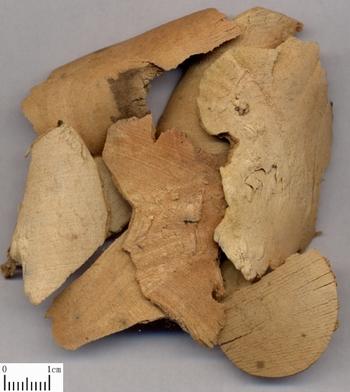Wu Yao

Naming
Wu Yao (Radix Linderae)——Ben Cao Shi Yi (A Supplement to the Compendium of Materia Medica)
The Processing of Wu Yao
Origin
The root tuber of Lindera aggregata (Sims.) Kosterm. of family Lauraceae.
Location
Zhejiang, Anhui, Jiangxi provinces in China.
Harvest
Collected in all seasons.
The true smell and taste
Slightly fragrant, pungent and bitter with cool sensation when tasted.
Best quality
Big, delicate, strongly fragrant, red-whitish without black spot.
Processing
Unprocessed or stir-baked with bran.
The Effect of Wu Yao
Property
Pungent, warm; lung, spleen, liver, kidney and gallbladder meridians entered.
Actions
Move qi and alleviate pain, warm kidney and dispel cold.
Indications
A. Thoracic and abdominal pain due to congealing cold and qi stagnation
It enters lung, spleen and kidney meridians, and has the actions of dispersing and regulating flow of qi, dispersing cold, moving qi and alleviating pain. It is indicated for pain syndrome due to congealing cold and qi stagnation. For it enters liver and kidney meridians, it is more suitable for the treatment of colic with abdominal pain due to cold congealing with qi stagnation in liver meridian. For this syndrome, it is usually combined with the cold-dispersing, qi-moving and pain-alleviating herbs. For instance it is combined with Xiao Hui Xiang, Qing Pi, Gao Liang Jiang in Tian Tai Wu Yao San from Yi Xue Fa Ming. For thoracic and hypochondriac stuffiness and pain due to cold congealing and qi stagnation, it is usually combined with the chest-soothing and qi-moving herbs such as Xie Bai, Gua Lou and Yan Hu Suo. For gastric and abdominal distending pain due to cold congealing and qi stagnation, it should be combined with the qi-regulating and middle-energizer-harmonizing herbs. For instance it is combined with Chen Xiang, Mu Xiang, Zhi Shi and Bing Lang in Wu Mo Yin Zi from Yi Fang Ji Jie. For dysmenorrhea, it should be combined with the herbs of moving qi and activating blood, regulating menorrhea and alleviating pain. For instance it is combined with Dang Gui, Xiang Fu in Wu Yao Tang from Ji Yin Gang Mu (Compendium of Therapy on Women's Disease).
B. Frequent urination or enuresis of deficiency-cold type
It has the actions of warming kidney and dispersing cold, reducing urination and stopping enuresis. For frequent urination and infantile enuresis due to kidney yang deficiency, it is usually combined with the herbs of tonifying kidney and astringent, warming kidney and reinforcing yang. For instance it is combined with Shan Yao and Yi Zhi Ren in Suo Quan Wan from Fu Ren Da Quan Liang Fang.
Dosage and Administrations
Decoct 3~10 g.